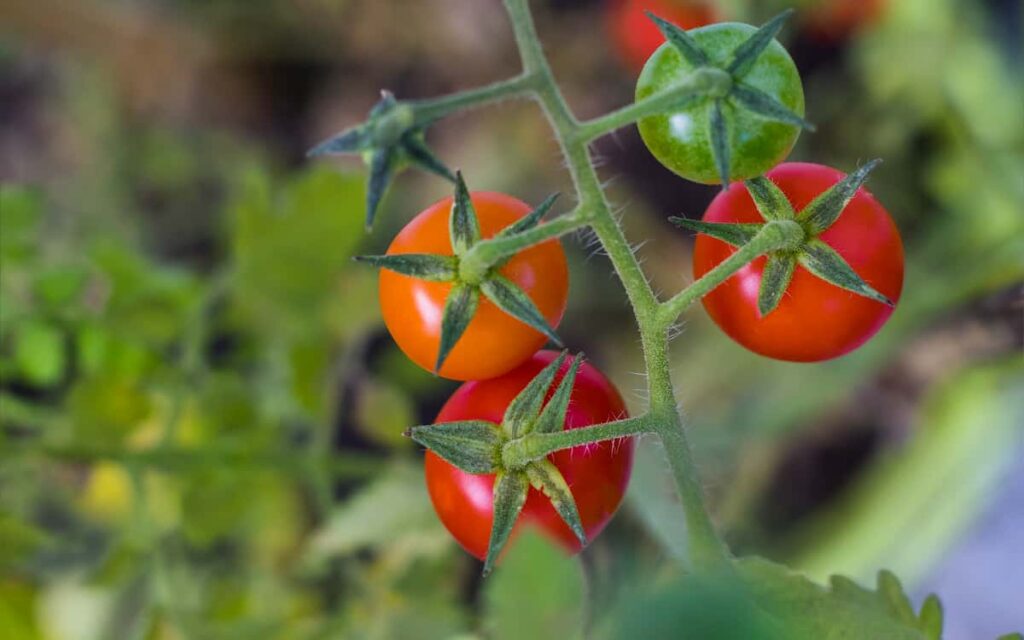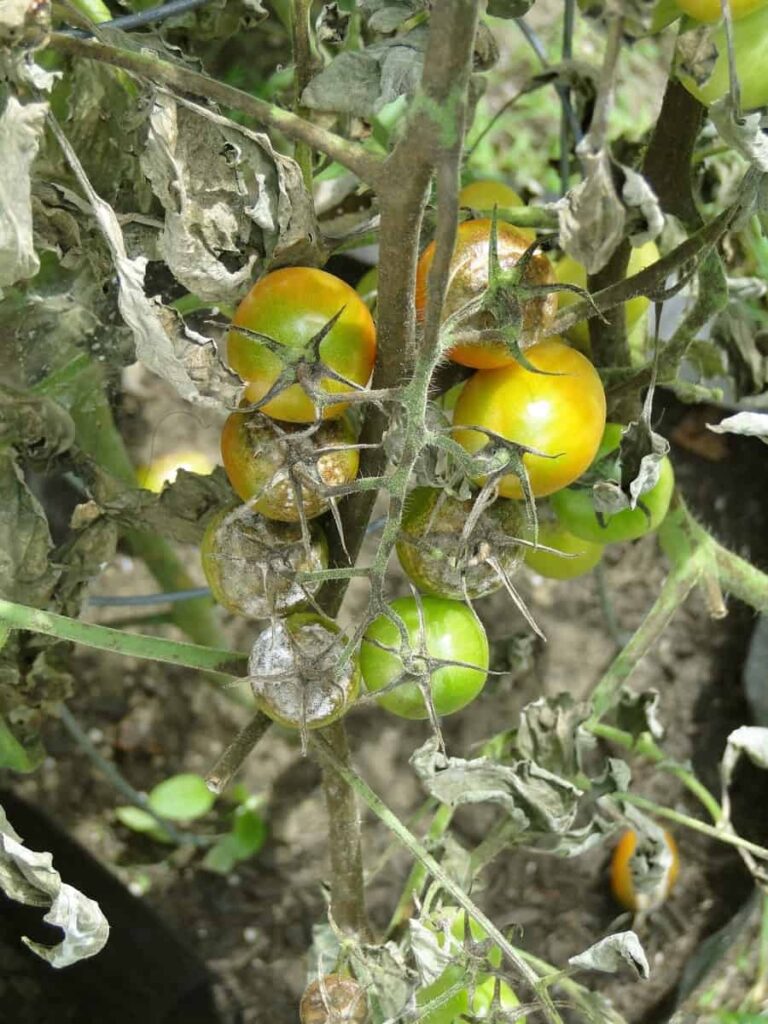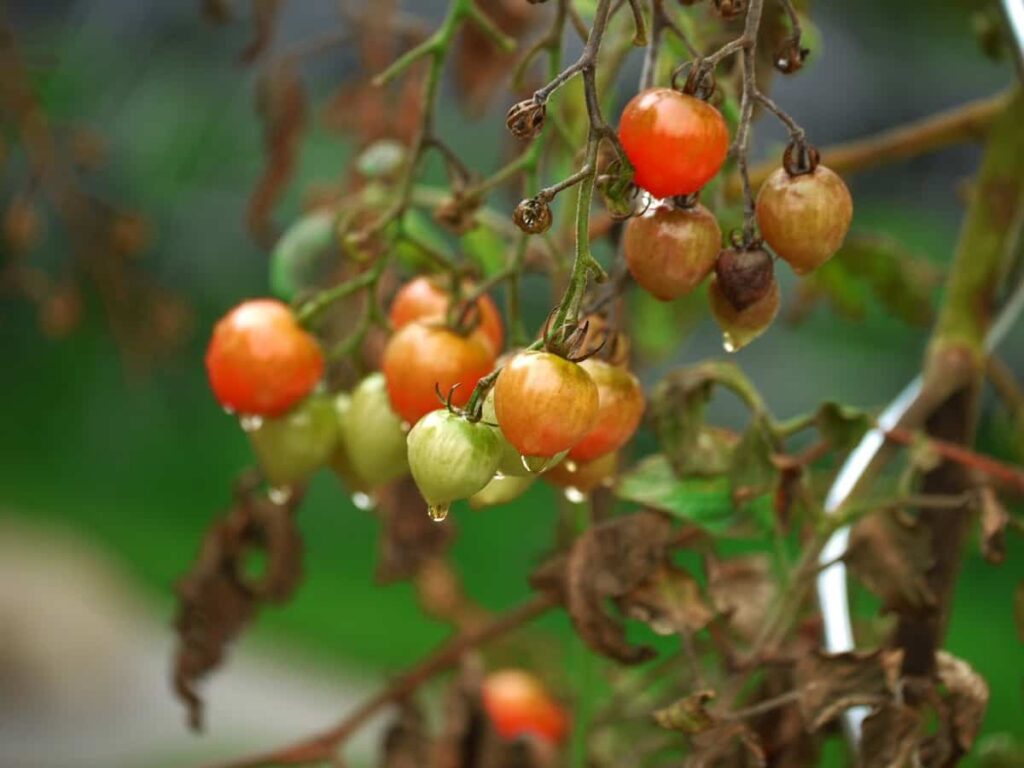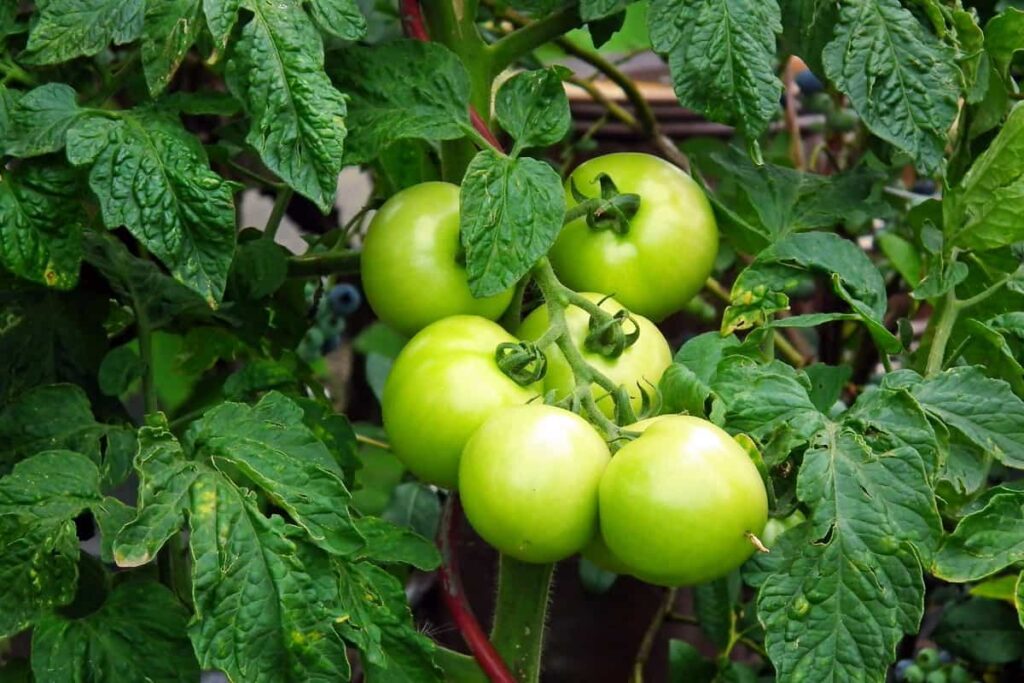Tomatoes are the most popular vegetables grown in home gardens, yet they are also susceptible to several nutritional deficiencies. Although there are many ways to address these deficiencies, some methods are more effective than others. This article will tell you about identifying and addressing nutritional deficiencies in your tomato crop.

Nutritional deficiencies in Tomato Crop
Nitrogen deficiency in Tomato crop
Nitrogen is the most important nutrient for tomato plants. It is responsible for the growth of leaves and stems and helps the plant produce more fruits. A nitrogen deficiency causes the tomato leaves to turn yellow, and the plant may produce fewer fruits. If your tomato plants show nitrogen deficiency, you can do a few things to fix the problem. You can apply a fertilizer that contains nitrogen, such as ammonium sulfate or urea.
You may need to give your plants a foliar feeder if you have a serious nitrogen deficiency. This involves applying liquid fertilizer directly to the leaves of your tomato plants. This method is often used by professional growers and can effectively correct a nitrogen deficiency. Nitrogen deficiencies are common in tomatoes but can be easily corrected with simple solutions.
Phosphorus deficiency in Tomato crop
Tomatoes are a popular crop among farmers and home gardeners alike. However, they are susceptible to many nutritional deficiencies, including phosphorus deficiency. Symptoms of phosphorus deficiency in tomatoes include small, dark green leaves; stunted growth; and poor fruit production. The lack of phosphorus can also cause the foliage to turn purple. Fortunately, there are many ways to correct phosphorus deficiency in tomatoes.
In case you missed it: How to Grow Tomatoes in Australia from Seed: Best Time to Plant in Pots, the Backyard at Home for Sydney, Melbourne, and Victoria

Before planting, you can amend the soil with organic matter. Another is to side-dress the plants with a phosphorus-rich fertilizer during the growing season. Finally, foliar feeding with a phosphorous-based fertilizer can also be beneficial. If you suspect that your tomato plants suffer from phosphorus deficiency, quickly correct the problem. Your tomatoes will soon be back on track with proper care and attention!
Potassium deficiency in Tomato crop
Tomatoes are a popular home gardening crop but can be susceptible to potassium deficiencies. Potassium is an essential nutrient for tomatoes, helping water uptake, disease resistance, and overall plant health. Potassium deficiency can cause leaves to be yellow and curl, reducing fruit yield. There are several ways to test for potassium deficiency in your tomato plants. One way is to take a leaf sample to your local Cooperative Extension office or agricultural extension agent for testing.
Another way is to look for deficiency symptoms, such as yellowing or curling leaves, small fruits, or stunted growth. If your tomato plants are deficient in potassium, you can do simple things to correct the problem. One option is to add potassium-rich amendments to your soil, such as composted manure or wood ash. You can also apply a commercial fertilizer that contains potassium. You should follow the instructions on the label for proper application rates.
In case you missed it: Roma Tomato Growing Guide: For Pots, Ground, Raised Beds, and Buckets

Sulfur deficiency in Tomato crop
Sulfur is a macronutrient essential for plants’ growth and development. It plays a role in many biochemical processes, including the synthesis of proteins and enzymes, the metabolism of carbohydrates and lipids, and the production of chlorophyll. Plants typically obtain sulfur by the uptake of sulfate ions from the soil solution. However, sulfate ion levels in soils can be low, especially in arid or sandy soils. When this happens, plants may suffer from a sulfur deficiency.
Symptoms of sulfur deficiency include yellowing of leaves (chlorosis), stunted growth, and reduced yields. In severe cases, leaves may drop off the plant entirely. Sulfur deficiency can also make tomatoes more susceptible to disease. To correct a sulfur deficiency, amend your soil with organic matter. You can also add elemental sulfur to the soil or use a fertilizer that contains sulfate ions. Follow the manufacturer’s instructions when using any fertilizer.
Magnesium deficiency in Tomato crop
Magnesium is an important macronutrient for tomato plants, and a lack of magnesium can lead to many problems. Magnesium is responsible for the green color of plants, and a deficiency can cause the tomato leaves to turn yellow or brown. This can affect the plant’s ability to photosynthesize and may lead to reduced yields. A magnesium deficiency can also cause the fruit to be small and misshapen.
There are several ways to correct a magnesium deficiency in your tomato crop. One way is to add magnesium sulfate (Epsom salt) to the soil before planting. You can also spray the plant leaves with a magnesium sulfate solution once every two weeks during the growing season. Another option is to use a fertilizer that contains magnesium sulfate.
Carefully follow the directions on the label so that you do not over- or under-fertilize your plants. If you suspect that your plants suffer from a magnesium deficiency, it is important to take action quickly. You can help your plants stay healthy and productive by correcting the problem.
In case you missed it: Pest and Disease Management in Kiwi: Causes, Symptoms, Treatment, Chemical, and Biological Control

Manganese deficiency in Tomato crop
Manganese is an essential plant micronutrient and involves several important physiological processes, including photosynthesis, respiration, nitrogen fixation, and synthesizing enzymes and vitamins. Manganese deficiency is a common problem in tomato crops and can lead to reduced yield and quality.
Manganese deficiency symptoms include yellowing or chlorosis of leaves, stunted growth, poor fruit development, and reduced yields. The best way to correct manganese deficiency is to apply a manganese-containing fertilizer to the soil before planting. Once the crop is established, foliar sprays of manganese sulfate or chelated manganese can be used to correct deficiencies.
Molybdenum deficiency in Tomato crop
Molybdenum is an essential micronutrient for tomato crop growth. However, it is often deficient in agricultural soils, especially high-pH soils. Nutrient deficiency can lead to stunted growth and yellowing of leaves (chlorosis). To correct a molybdenum deficiency, growers can apply the nutrient in a foliar spray or through irrigation water. However, because molybdenum is not very mobile in the plant, it is important to apply it when it is actively growing. For best results, consult with a local extension agent or crop specialist.
Zinc deficiency in Tomato crop
Zinc is an important micronutrient for tomato plants. It plays a role in many plant processes, including photosynthesis, cell division, and protein synthesis. Zinc is also involved in the regulation of gene expression. Zinc deficiency can lead to several problems in tomato plants, including stunted growth, yellowing of leaves, and fruit with poor flavor. Zinc deficiency can also make plants more susceptible to disease.
In case you missed it: High Yield Hybrid Tomato Varieties in India: For Winter, Summer, and Rainy Season

There are several ways to correct zinc deficiency in tomato plants. One is to apply zinc fertilizer to the soil. Another is to spray zinc sulfate or zinc chelate on the plant leaves. If you suspect that your plants are deficient in zinc, it is important to have them tested by a qualified professional before applying any corrective measures.
Boron deficiency in Tomato crop
If your tomato crop shows signs of boron deficiency, don’t worry – there are a few simple solutions. Boron is an essential plant micronutrient and is key in many plant processes. A lack of boron can cause several problems in tomatoes, including stunted growth, yellow leaves, and poor fruit development.
Fortunately, correcting a boron deficiency is relatively easy. You can apply a boron-containing fertilizer to your tomato plants or add compost or manure containing high levels of boron. You should follow the directions on the fertilizer packaging, as too much boron can harm plants. Once you’ve corrected the deficiency, your tomato plants should return to normal growth and development.
Calcium deficiency in Tomato crop
When you notice a calcium deficiency in your tomato crop, check the pH of your soil. If it’s too low, it could be preventing the plants from taking up calcium. Aim for a pH between 6.0 and 6.8. You can adjust the pH with lime or other amendments according to your soil test results.
If the pH is fine, you need to look at other possible causes of the deficiency. One is a lack of calcium in the soil itself. This can be remedied by adding compost or manure to your garden beds before planting. Make sure you’re watering deeply and regularly during dry spells. Finally, some pests and diseases can cause calcium deficiency in tomatoes by damaging the roots or leaves.
Check for signs of pests or diseases and treat them accordingly if you find any problems. With a little research, you should be able to figure out what’s causing the calcium deficiency in your tomato crop and take steps to fix it. With proper care, your plants should start producing juicy, delicious fruits again!
Copper deficiency in Tomato crop
Copper is an essential micronutrient for tomato plants and is responsible for several important functions in the plant, including disease resistance, bud development, and photosynthesis. A lack of copper can lead to several problems in the tomato crop, including stunted growth, wilting leaves, and poor fruit production. There are several ways to correct a copper deficiency in the tomato crop.
In case you missed it: Vertical Tomato Farming: Modern Way of Getting More Yields in Less Space

One way is to apply a copper-based fertilizer to the soil around the plants. Another way is to spray the foliage with a solution of copper sulfate or another copper-containing compound. Correcting a copper deficiency in the tomato crop as soon as possible is important to avoid yield losses. If you suspect your plants are deficient in copper, contact your local extension office for more information on testing and treating the problem.
Iron deficiency in Tomato crop
Iron is one of the micronutrients that plants need for proper growth and development. It is involved in several important processes in the plant, including photosynthesis, respiration, and chlorophyll synthesis. A lack of iron can lead to several problems in the tomato crop, including stunted growth, yellow leaves, and poor fruit production.
There are many ways to correct iron deficiency in the tomato crop. One is to apply an iron-rich fertilizer to the soil around the plants. Another is to spray the leaves with an iron-containing solution. This will help to compensate for the lack of iron in the soil and provide the plants with the nutrients they need for proper growth and development.
Conclusion
Although many potential nutritional deficiencies can affect tomato crops, with a little bit of knowledge and effort, they can be easily fixed. By following this article, you’ll be well on your way to ensuring a healthy and bountiful tomato crop.
- How to Raise Pigs in Your Own Backyard: A Comprehensive Guide
- Budget Friendly Sheep Shed Ideas: Cheap and Low-Cost Tips
- How Much Do Cattle Farmers Make: Revenue Streams in Cattle Farming
- Management Pests and Diseases in Your Cotton Field
- Sheep Farming Business Plan for Beginners
- Aquaponic Farming at Home: A Step-By-Step Guide
- Profitable Village Farming Business Ideas in 2024
- High-Yield Aquaculture: Fast-Growing Fish for Farming
- Effective Fish Pond Construction Techniques for Beginners
- Irrigation and Water Management in Pineapple Farming
- Blossom to Harvest: Mastering Flowering and Pollination in Papaya Farming
- Pig Fattening Essentials: From Selection to Sale for Beginners
- Raising Wagyu Cattle: A Complete Guide for Premium Beef Production
- Soil Types and Their Water Holding Capacity
- Optimizing Irrigation Schedules for Coconut Groves for Enhanced Yield
- Espresso Your Garden: Coffee Grounds for Healthier Acid-Loving Plants
- The Best Soil Mix for Snake Plants: How to Mix Your Own Snake Plant Soil
- Green Thumb Success: Expert Tips for Cultivating Greenhouse Beans All Year Round
- Bloom All Year Round: The Ultimate Guide to Indoor Hyacinth Care
- Eco-Friendly Gardening: How to Make Liquid Fertilizer from Kitchen Waste
- Ultimate Guide to Grow Anise in Pots: Explore Seed Propagation to Harvesting
- Guide to Raising Chester White Pigs: Discover Breed Facts to Growth Management
- Mastering the Elegance: The Ultimate Guide to Weeping Cherry Tree Care, Planting, and Maintenance
- Ultimate Guide to Planting Garlic in Grow Bags: Growing Strategies for Beginners
- How to Fix Spider Plant Leaf-Related Problems: Natural and Organic Remedies
- 10 Reasons Why Your Tulsi Plant is Shedding Leaves: Home Remedies and Solutions
- Optimizing Growth and Yield: The Advantages of Palm Bunch Ash Fertilizer
- Utilizing Neem Oil Extract as a Natural Pesticide for Hydrangea
- From Soil to Harvest: Various Ways in Which Farmers Can Use AI Tools
- Steps to Encourage and Induce Citrus Flowers: A Comprehensive Guide
- How to Fix Snake Plant Leaf-Related Issues: Natural and Organic Remedies
- Transform Your Garden into a Fragrant Oasis with Raat Ki Rani (Night Blooming Jasmine)
- Discover the Ideal Chicken Breeds for Philippine Farms
- How to Create a Poultry Egg Farm Business Plan for Profits
- Grow Lemon Cucumbers Like a Pro: Insider Techniques for Bountiful Yields
- Ultimate Guide to Caring for Your Pink Princess Philodendron: Tips for Thriving Variegation
